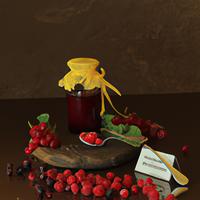
1 serving (100 grams) contains 56 calories, 1.4 grams of protein, 0.2 grams of fat, and 13.8 grams of carbohydrates.

Log this food in SnapCalorie

Nutrition Information
Calories |
140 | ||
|---|---|---|---|
% Daily Value* |
|||
| Total Fat | 0.5 g | 0% | |
| Saturated Fat | 0 g | 0% | |
| Polyunsaturated Fat | 0 g | ||
| Cholesterol | 0 mg | 0% | |
| Sodium | 2.5 mg | 0% | |
| Total Carbohydrates | 34.5 g | 12% | |
| Dietary Fiber | 10.8 g | 38% | |
| Sugars | 18.5 g | ||
| protein | 3.5 g | 7% | |
| Vitamin D | 0 mcg | 0% | |
| Calcium | 82.5 mg | 6% | |
| Iron | 2.8 mg | 15% | |
| Potassium | 687.5 mg | 14% | |
* Percent Daily Values are based on a 2,000 calorie diet. Your daily values may be higher or lower depending on your calorie needs.
Food Attributes
Source of Calories
About Rote johannisbeeren
Rote Johannisbeeren, also known as red currants, are small, tart berries native to Europe and widely cultivated in cooler climates. These vibrant fruits are bursting with flavor and nutrients, making them popular in European cuisine for jams, jellies, desserts, and sauces. Rich in vitamin C, antioxidants, and dietary fiber, red currants support immune function, promote healthy digestion, and combat oxidative stress. They are low in calories and naturally fat-free, making them a smart choice for weight-conscious individuals. Additionally, their potassium content contributes to heart health and proper muscle function. While their tartness makes them less appealing as a standalone snack, their versatility shines in both sweet and savory dishes. However, due to their acidity, consuming large quantities may irritate sensitive stomachs. Overall, Rote Johannisbeeren are a nutrient-dense and delicious addition to a balanced diet.



